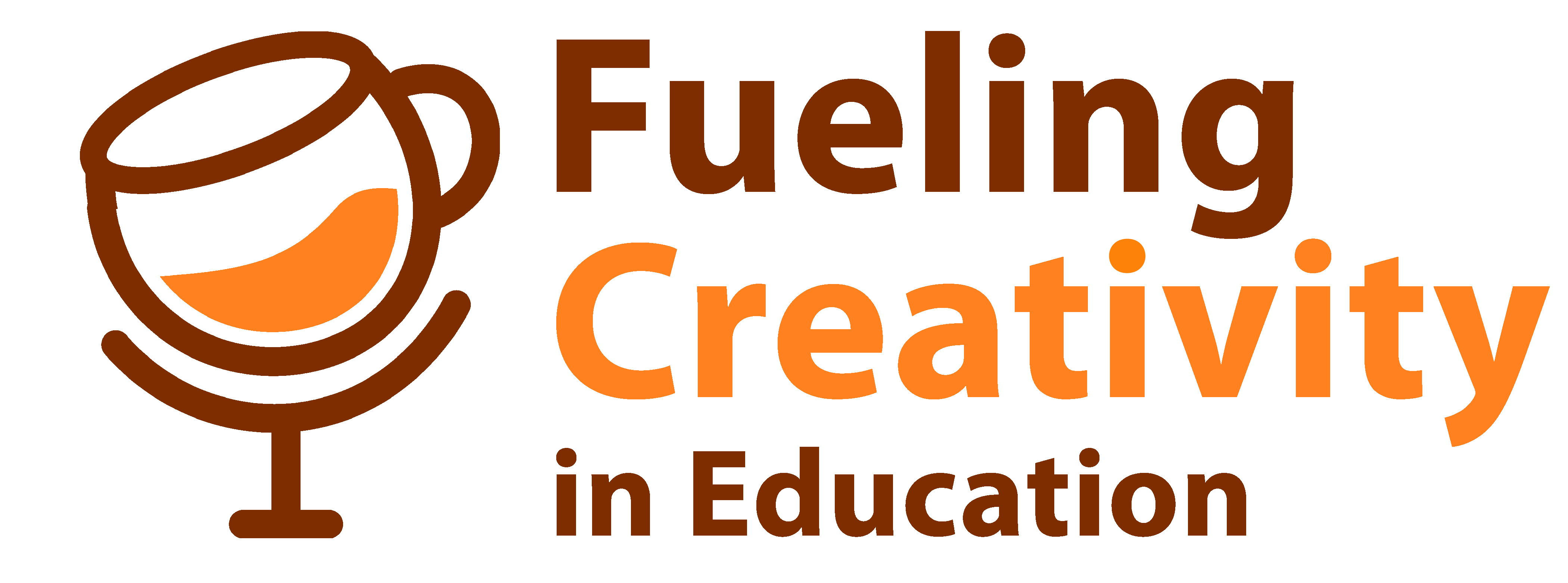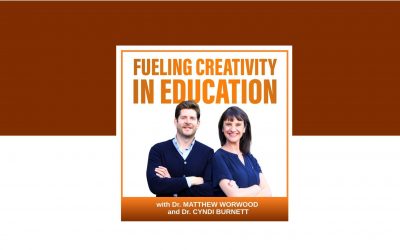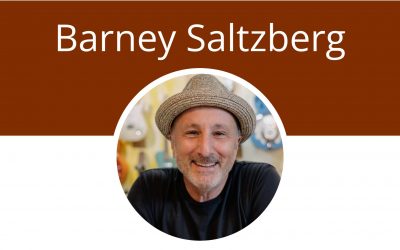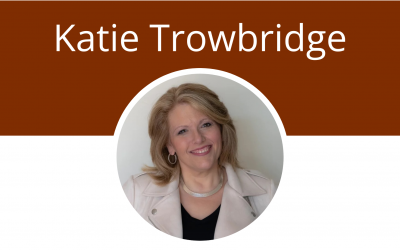LISTEN & LEARN
The Creativity Choice: A Conversation with Dr. Zorana Ivcevic Pringle
– Dr. Zorana Ivcevic Pringle
Episode Transcription
Listen & Learn: The Creativity Choice: A Conversation with Dr. Zorana Ivcevic Pringle
Cyndi Burnett:
Hello and welcome to the Fueling Creativity and Education podcast.
Matthew Worwood:
It’s summer break here in the US and that means it’s time for another Listen and Learn series.
Cyndi Burnett:
And this series features bite sized episodes designed to support some professional development during the holidays.
Matthew Worwood:
Now, as scholar practitioners, Cindy and I do see the summer as a chance to recharge and catch up on new ideas and research. Dutch.
Cyndi Burnett:
So Matt and I put together a list and we reached out to some of our past guests who have recently published books and invited them back to talk briefly about their latest work.
Matthew Worwood:
And if you’re a regular listener to the show and listened to one of our Listen and Learn series before, you’ll know that these off season episodes are short and focused. We asked just three questions about their new book, providing a perfect way to stay inspired while still making time for that rest and family.
Cyndi Burnett:
So whether you’re a new or regular listener, be sure to follow us on your favorite podcast platform and enjoy this special summer edition of Fueling Creativity and Education.
Matthew Worwood:
So let’s begin. In this episode, we welcome back to the show Dr. Zorona IV Chavich Pringle, who is a senior research scientist at Yale University center for Emotional Intelligence. Now, for our regular listeners, you will know that we had Zerona in during season six of the podcast and Zero did a double espresso with us on Emotional intelligence and creativity. Dr. Sirona, welcome back to the show.
Zorana Pringle:
Thank you for having me.
Cyndi Burnett:
So today we’re talking to Zorana about her new book, the Creativity Choice, which you can purchase in the show notes below. And we’re going to ask her three quick questions so it can spark your curiosity and have you go pick this book up so you can read it on your family vacation. So our first book, our first question, Zorana, is can you give us, and this isn’t even a question, can you give us a 60 second pitch of your book?
Zorana Pringle:
The Creativity Choice is the book that starts with the premise that we have learned in the last 75 years a lot about coming up with creative ideas. They are programs, they are techniques. We know how to do it, but what is missing is that, okay, now you have an idea, what do you do? And the Creativity Choice is about the process of transforming ideas into something tangible. You are doing a lesson plan, you are doing a new curriculum, you are designing a new school, you are writing an essay. Whatever you are doing, you it can help you go through the ups and downs of the process.
Cyndi Burnett:
That sounds great and thank you for that quick pitch. Who is your target audience for this.
Zorana Pringle:
Book, the audience can be anybody who is interested in creativity in any way. And that means you want to support and develop your own creativity, those of others. This is a podcast for educators and those in education. Do you want to support it and develop it in your staff? If you are principal, school leader, in your students, it is relevant for all of those audiences. If you are a coach working in a space of leadership or personal development, it is for you too.
Cyndi Burnett:
And Zerana, what’s a misconception about, about your topic that your book breaks open?
Zorana Pringle:
There are a number of misconceptions that the creativity choice pulls apart. One is that creativity is really about arts. And sometimes we see this in programs that are trying to build creativity, which ends up looking as a component of drawing in an otherwise different setting. No, creativity is not just about the arts. Creativity is about anything that can be in some way original and effective or appropriate for its context. And another big misconception is the one that I have started with, and that is creativity is not primarily or firstly about coming up with ideas. We start with ideas, but those ideas change, they develop, they evolve in the process. So it’s not, you have one idea now you are executing.
Zorana Pringle:
It is a continual process of development.
Matthew Worwood:
And just to very quickly build on that, I think the context piece, which can so often easily get overlooked when we focus too much on originality and appropriateness. But. But it’s appropriateness to that environment. So it’s also about responding to some of the constraints and challenges within that environment. You’ve got this great idea, but as you begin to put it together, there are these constraints. And I quite often talk to those teachers about, yes, there are time constraints, there are limitations with the resources that you have within your space. And it sounds to me it’s a recognition that it’s a choice to take on those challenges, to remain flexible in response to those challenges, to adapt and modify. And is it fair to continue to persevere as well, despite all of the obstacles that you’re facing as you’re putting it together?
Zorana Pringle:
Oh, I very much agree. Creativity always has obstacles, always has challenges, always has a lot of uncertainties. Sometimes that seems discouraging to people because we have a misconception, again, coming to that idea of misconceptions, that creativity is about complete freedom of choice. There was a study a couple of years ago by a bunch of colleagues of mine that looked at creativity myths across six different countries. They found that about 70% of people across these different countries all over the world believe that creativity is greatest when we have full freedom of action, but it is not. We are more creative with constraints. They push us towards more original solutions. Without constraints, you go to ways of thinking, ways of doing that come more naturally and therefore are more related to things we have done previously and that are more habitual.
Zorana Pringle:
So constraints are pushing us in directions that are going to be original. It doesn’t feel like that always. And the creativity choice is really spending a lot of time on those feelings that we get during the creative process. How to harness their power, how to manage them and when they become completely overwhelming, how to deal with them so they don’t overpower you and Zoran.
Cyndi Burnett:
I have to say I did read most of the book and I’m really enjoying that aspect, is really identifying those emotions that come with the creative process. That’s often lacking in the cognitive, rational, semantic research around creativity. So thank you for bringing that in. And of course, that is your specialty.
Zorana Pringle:
Thank you.
Cyndi Burnett:
One last question for you. What is one concrete or practical thing.
Zorana Pringle:
Your book can teach others to stay with? This theme that we discussed of this book is opening the emotional space of creative work. Here is a very practical thing. We all, knowing our emotions and knowing ourselves, can get a sense of what our triggers are. What are some regularities in our emotional experiences? It turns out we can use those to our advantage. Sometimes we say that we feel creative. What we usually mean by that is that there is this sense of a mood, of being expansive, being able to be playful and spontaneous. That is the idea generation power of energized and happy moods. But creative work also involves critical thinking.
Zorana Pringle:
And we are better at doing that when we are more subdued moods or maybe even little grumpy moods. And we can use that to our advantage. We can say, okay, right now I am feeling playful and I’m going to work on those quick idea generation brainstorming tasks. At another time, you are feeling more subdued. Well, that is really good for those tasks that require analyzing, reviewing and improving your previous work. So you can use both.
Matthew Worwood:
And I do just want to quickly build on that and say that, Serana, that was a quite a big topic of our interview with you back in season six and since then. And I think I’d referenced this in the, in the show as well, I’ve become more sensitive as an educator when I walk into that classroom. If I’m not feeling that ideation mood, I don’t, I don’t feel the necessity to push my students to generate ideas because it’s, it’s just not there. And sometimes I have tried to shift into more of kind of like a review or a critical analysis of the problem or another aspect that might not necessarily be about those generating fun, open ideas type sessions. So I appreciate you sharing that and I do think as you’re an educator thinking and reflecting that mood piece, the emotional piece. Feel free to go back. We’ll we’ll link to that past episode in season six, as well as of course, an opportunity to explore that in this book. So Dr.
Matthew Worwood:
Tarana, thank you so much for coming back on the show. We wish you all the best with this book. It certainly is on my summer series to finish it. It’s great that we’re opening up this summer series with the book, so thank you so much. We really appreciate everything that you’re doing at the moment to promote and cultivate creativity. And we also appreciate the fact that your responses were so tailored toward the teaching and learning environment. Thank you for doing that. So we hope you’ve enjoyed this first episode in our summer 2025 listen and learn series.
Matthew Worwood:
Please visit our website which a full list of all the books we’ve covered during this series with links to the author’s websites and links to where you can purchase the books online. You can access this page@foldingcreativitypodcast.com summerreadings2025 and.
Cyndi Burnett:
We are still booking guests for season 11 of the podcast. So if you have any ideas on researchers, practitioners or educators, or perhaps ideas on topics you’d like us to cover, please please reach out@ideasuelingcreativitypodcast.com My name is Dr. Cindy Burnett.
Matthew Worwood:
And my name is Dr. Matthew Werwood.
Cyndi Burnett:
You’ve been listening to the Fueling Creativity in Education podcast. This episode was made possible thanks to our sponsor, Curiosity to create.
In this special summer edition of the Fueling Creativity in Education Podcast, hosts Dr. Cyndi Burnett and Dr. Matthew Worwood welcome back Dr. Zorana Pringle, senior research scientist at the Yale Center for Emotional Intelligence, to discuss her new book, “The Creativity Choice.” In a concise, listen-and-learn format, Dr. Pringle offers a compelling overview of her book, which explores what happens after we’ve come up with creative ideas—emphasizing the process of transforming those ideas into tangible outcomes.
The conversation highlights that creativity isn’t limited to the arts; it’s a multifaceted process relevant to lesson planning, curriculum design, and problem-solving in any educational context. Dr. Pringle also addresses common misconceptions about Teaching Creativity, such as the belief that it requires complete freedom or is only about idea generation, emphasizing instead the importance of constraints and the emotional journey involved in creative work.
Listeners will gain practical insights into how emotions impact different stages of the creative process, from playful ideation to critical evaluation. Dr. Pringle shares actionable advice, encouraging educators (and anyone cultivating creativity) to recognize their own emotional patterns and leverage them—using energized moods for brainstorming and more subdued moods for critical review.
The episode not only introduces inspiring new perspectives on creativity in education but also serves as a sneak peek into Dr. Pringle’s book, recommended for educators, leaders, and coaches alike. Be sure to visit the podcast website for the complete summer reading list, and stay tuned for more enriching episodes in this summer professional development series.
Episode Debrief
Collection Episodes
Developing Talent for Activism: Transformational Giftedness and Animal Justice
Listen & Learn Developing Talent for Activism: Transformational Giftedness and Animal Justice“Instead of telling somebody, here's what you need to believe about animals, She gives him information about animals, Here's what study show about how animals behave, and...
Just a Banana and The Rabbit’s Feat: A Conversation with Children’s Book Author Barney Saltzberg
LISTEN & LEARN Just a Banana and The Rabbit’s Feat: A Conversation with Children's Book Author Barney Saltzberg“ And then I came up with an idea called Imagine Art. And it was finding art in cracks in the sidewalk, peeled paint, things like that. And when I was...
Deeper Thinking in the Classroom: A Conversation with Katie Trowbridge on Teaching Creativity
LISTEN & LEARN Deeper Thinking in the Classroom: A Conversation with Katie Trowbridge on Teaching Creativity “ the Deeper Thinking in the Classroom book is all about how to get students to three think in creative critical ways, how to get them to be connected. And...
Podcast Sponsor

We are thrilled to partner with Curiosity 2 Create as our sponsor, a company that shares our commitment to fostering creativity in education. Curiosity 2 Create empowers educators through professional development and community support, helping them integrate interactive, creative thinking approaches into their classrooms. By moving beyond traditional lecture-based methods, they help teachers create dynamic learning environments that enhance student engagement, improve academic performance, and support teacher retention. With a focus on collaborative learning and exploration, Curiosity 2 Create is transforming classrooms into spaces where students thrive through continuous engagement and growth.








